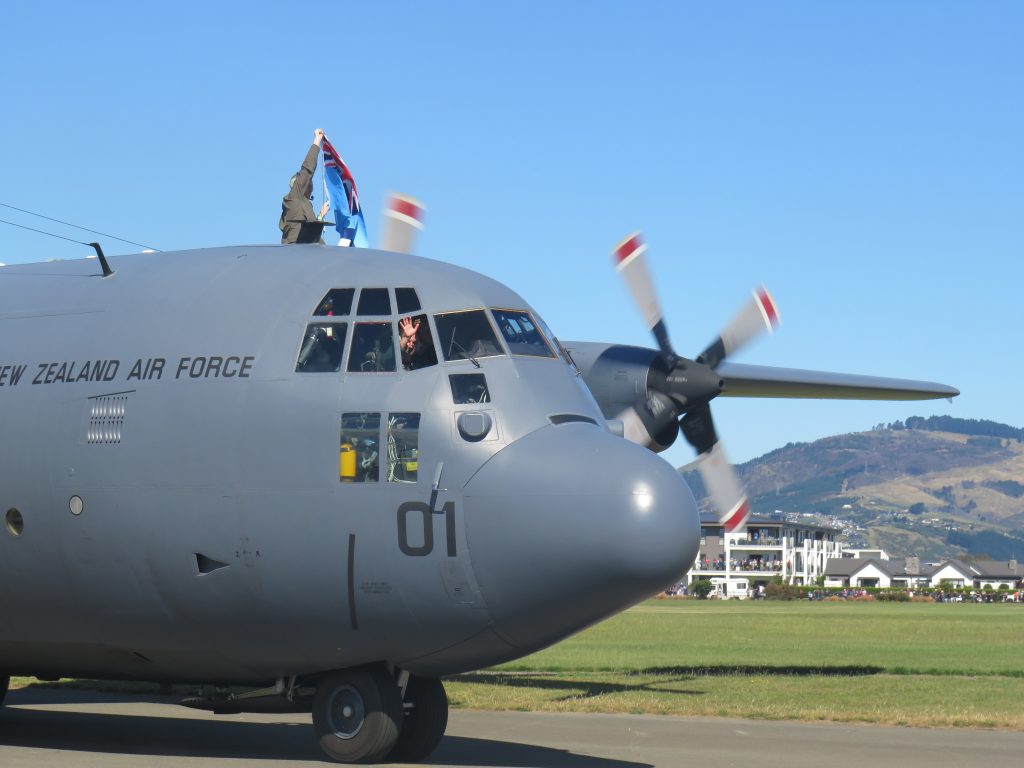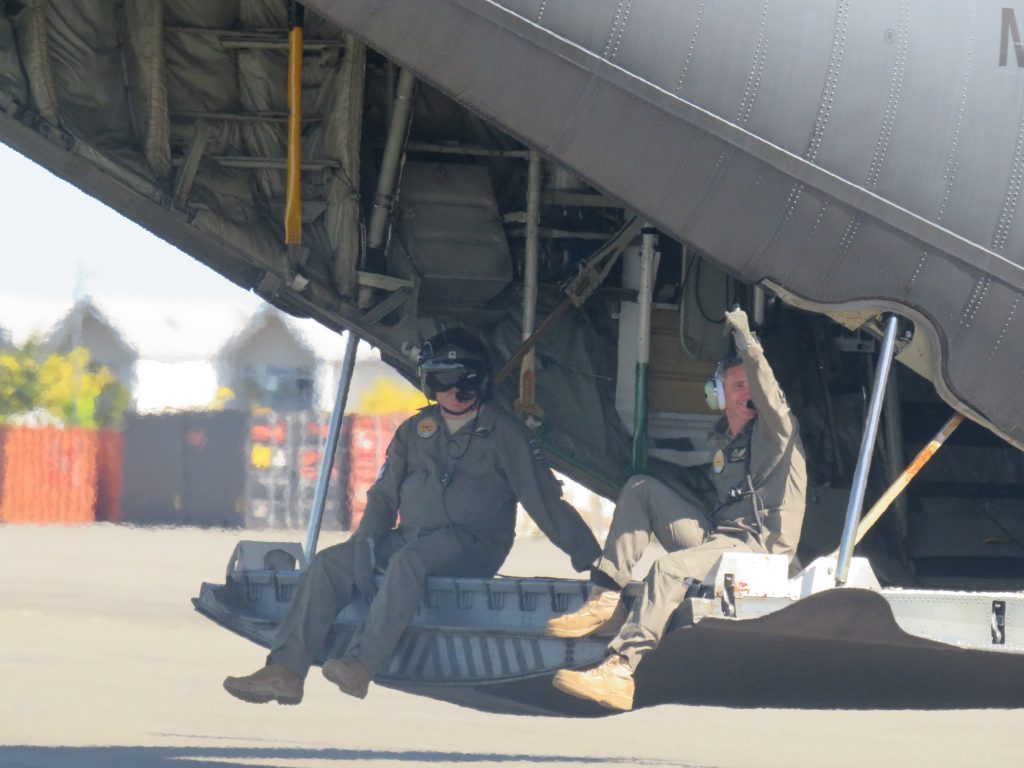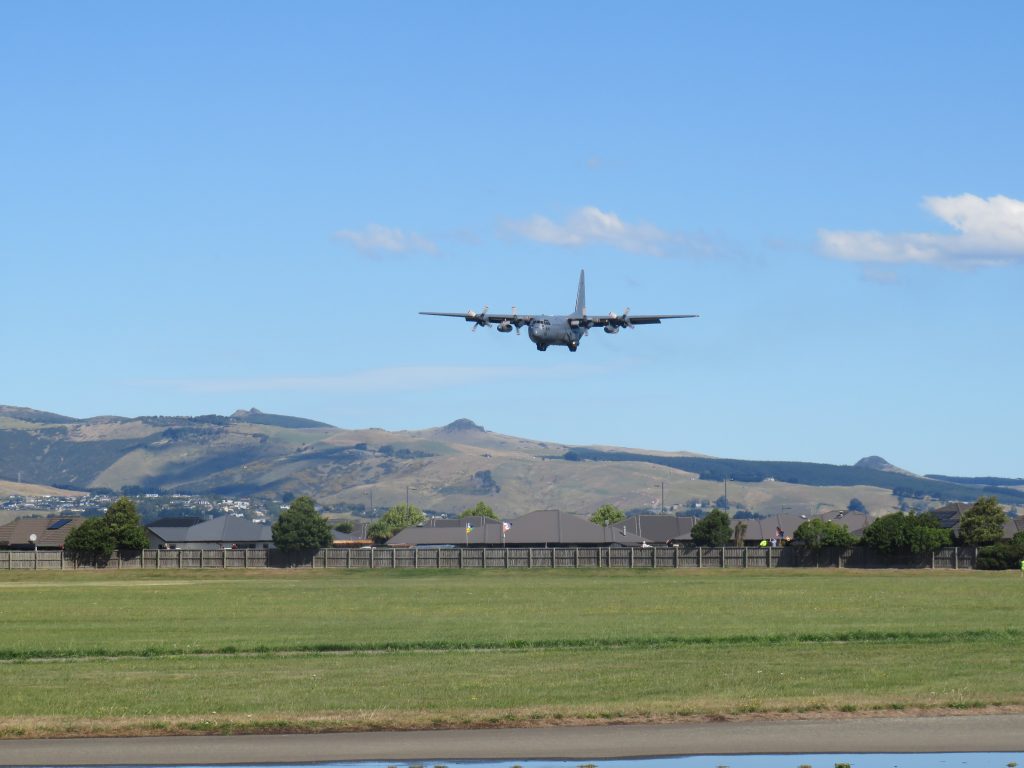
New Zealand Defence Force Hercules landed for the last time in February at the Air Force Museum at Wigram. Reporter Dellwyn Moylan was invited to attend.
The Royal New Zealand Air Force C-130H Hercules (NZ7001), affectionately known as Charles by air force personnel (based on the C-130H’s Nato phonetic alphabet), will be open to public viewings this month at Air Force Museum at Wigram, in Christchurch.
Not many 60-year-olds would throw open the doors to their place for five days, but that is what Charles is doing from April 11 to 15. Anyone can attend.
In his final flyover across New Zealand in February, which Ashburtonians missed out on due to the weather, the first of the Hercules owned by the air force landed at its forever home at the air force museum.
After a planned ‘‘touch and go’’ the plane did a final circle over parts of Canterbury on February 19 before it came in for its final landing on the grass strip that acted as a runway. It stopped in just 273.5metres.
After landing more than 4000 litres was siphoned from the tank.
This amount of fuel was more than enough for a second ‘‘touch and go’’ or to take the Hercules to the Christchurch International Airport which was the alternative plan.

Members of the flight crew from No.40 Squadron and the planning team behind the historic landing will present talks, at 11am and 1pm on the open days, about the planning and practice that went into preparing the airfield for the Hercules’ final landing.
Like many celebrities he has had a little work done on him. To get it into storage his nose had to be removed but will be restored for the open days.
The 11m high tail fin the equivalent of a four-storey building was removed.
With a wingspan of 40.5m, the aircraft is too large for the museum’s current spaces.
A fundraising campaign is under way to build a display hanger for the Hercules and the P-3K2 Orion.
Charles and his four brothers have been a Kiwi icon sometimes described as the ‘‘ute of the skies’.
It flew for 60 years clocking up 33,000 flying hours and 22,000 take off and landings. Charles turned 60 on March 24 and is the only one of the Hercules the RNZAF has set aside to be conserved.
The Hercules operated from Europe to the Southwest Pacific, from Afghanistan to Antarctic.

Chief of Air Force, Air Vice-Marshal Darryn Webb said the Hercules had clocked up midwinter Antarctic rescues in minus 35-degree Celsius temperatures, many disaster response missions across the Indo-Pacific, short-notice evacuation tasks, such as Kabul in 2021, and operated in many combat zones.
They have delivered troops, cargo and humanitarian aid.
NZ7001 was the first of three C-130H Hercules aircraft to arrive at RNZAF Base Auckland, Whenuapai in 1965 and the fleet was quickly put to work transporting personnel from NZ Army 161 Battery and aid to Vietnam.
That same year, a Hercules with personnel and supplies made its first flight to Antarctic.
By 1969, the aircraft had proven so valuable in providing strategic and tactical airlift capabilities, a further two were purchased bringing the fleet to five.
Brett Marshall, Director of the Air Force Museum, said ‘‘NZ7001 is special as it was the first model of its kind to be exported by Lockheed and so we were the first customer.’’

In 2020, the government announced the ageing fleet would be replaced by five new C-130J-30 Hercules.
The last of the new aircraft arrived in December, allowing the C-130H to take a well-earned retirement. The remaining four aircraft in the fleet have been retired at RNZAF Base Woodbourne.
OPEN DAYS
– The Air Force Museum open days to see the Hercules will be April 11- 15 from 10am to 4pm each day. Each day there will be an accessible hour starting at 9am for deaf, disabled and those needing accessibility assistance.
Each day at 11am and 1pm a presentation on the planning and preparation for the final flight into Wigram will run. Admission is free but donations welcome.




